Text
Week 13
Reflection on the semester:
I’ve always been quite fond of psychology but to be able to tie it into my creative practice this semester is very valuable to me.
As I enter my first semester of second year I am also very thankful to be able to continue developing the collaborative nature of my works with my peers. I think this project in particular I am very much grateful to be able to work collaboratively with Christine over the entire semester to create both her piece and my own.
I do personally think this is my proudest work of the semester and I am very proud of how far its come across the 12/13 weeks and am most definitely keen to be able to see it in person!
I am also thankful for Shaun and Darrin who continuously and meticulously gave me feedback to work and for making class extremely fun and something to look forward Tuesday and Thursday mornings? afternoons..?
1 note
·
View note
Text
Week 12: Creative Practice
Work prior to one-on-one feedback:
youtube
Last one-on-one feedback:
FROM DARRIN
Regarding the hypnagogic state, nothing should bee too rough or sudden, the work would more so transcend into being brutal and maybe exhilarating at that point
(sound) musical resolve for the end: confusion of tonality blue roof
(lighting) 1:04 make it less chunky, soften up ceiling to match with the fluidity of the visuals when attention should be drawn to the lighting
(sound, lighting) 1:15 roof dramatisation in sound
FROM SHAUN
flawless colour matching
lighting comes in washes which accentuates the architecture of Capitol Theatre
(lighting) 1:08 - full colour at 1:09/1:10 knock out a couple of rows
Shaun also mentioned the lighting being reminiscent of the works of Caravaggio and his use of Chiaroscuro lighting where there was a balance between light and dark which accentuated the elements of the work. He also mentioned the lights in reference to the lighting done by Roger Deakins in Blade Runner 2049 so to hear that made me feel rather proud.
I was particularly intrigued also by this lighting scene in Blade Runner 2049 not only with the use of caustic lights but also the minimality of the lighting to really accentuate light and dark also.
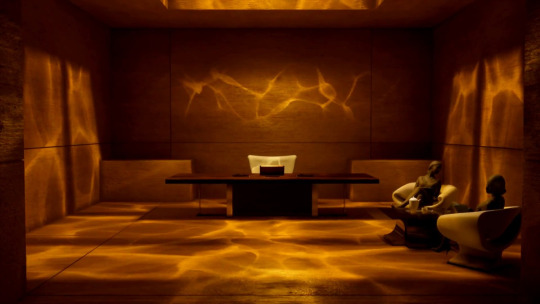
THE FINAL WORK (in Capitol Theatre - lighting, sound, visuals)
youtube
Visual and sound only:
youtube
On improving the HME project:
- looking back on some of the research I did I wish I had evidently applied more of the theory into my project but in saying that I also did find new research along the way and with the help of Darrin and Shaun to help me narrow and redirect my focus on the outcome/outlook of the work.
- what it could have been like if this work had a third person working on it (like Jollene, Minod and Thirech’s piece) - would that have been tighter? But at the same time I am very proud of the workload I was able to take on in this class this semester (with doing my own visuals and lighting and Christine’s visuals too)
Reflection on my project:
From viewing other classmates’ works, I found that the element of repetition and consistency or Steve Reich-like gradual building stood out to me and made me wish I had make that sense of gradual building in my work more prominent perhaps.
I also spoke to a friend external to the course, showed him my work and he said around 10 seconds in he began to get euphoric chills like he was in a state of trance and definitely the feeling of drifting between sleepiness and wakefulness which was very reassuring to hear.
However, reading over my weekly blogs and looking at past iterations of the visuals and lighting I am very proud to see the path my work has taken in comparison to the very first iteration of the work earlier on in the semester
0 notes
Text
Week 11: Creative Practice
This week really was where the bulk of the alterations and getting to the finish line/homestretch of the assignment occurred. This week Christine (my sound partner) and I met with both Darrin and Shaun for both sound and visual feedback on our works respectfully with the following feedback being given and taken into account this week.
youtube
Feedback from 1-1:
MY VISUALS/PHAROS (DARRIN)
Have sound ‘introduce’ the blackout section to pharos lighting work, keeping in mind that the screen is more grey than black when off.
As suggested by Ben about my pharos lighting, in regards to the heartbeat section, the red ceiling lights were only coming outwards and it was suggested that I play around and have it collapse back in as well to give the lighting more dynamic
Is the roof too full on too fast?
(sound) - pushing back squawks towards the negative valence portion of the work
(visual) a sense of ‘hypnagogic’ reached at the 15 second mark
(visual) - 0:21 movement of kaleidoscopic too sudden, a suggestion to lull it out more.
Regarding the hypnagogic state, nothing should bee too rough or sudden, the work would more so transcend into being brutal and maybe exhilarating at that point
MY VISUALS (SHAUN)
emphasis on transitions rather than rough and sudden cuts
bring in figure again (1:48) - if mishmashing woman and man, keep it consistent
take out 1:32 figure
Reworking the visual:
Focus was drawn to creating more transitions in the negative valence part of the work, this was primarily done through trialling blending modes and looking at fading layers below one another
youtube
Reworking (extending more so) the Pharos session:
Few changes were made regarding the lighting arrangement of the work, most of it being making small tweaks to certain colours that didn’t come through as well as they looked on the timeline/simulation screen vs in real life.
youtube
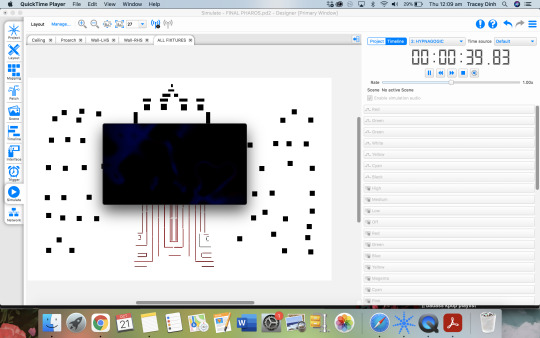
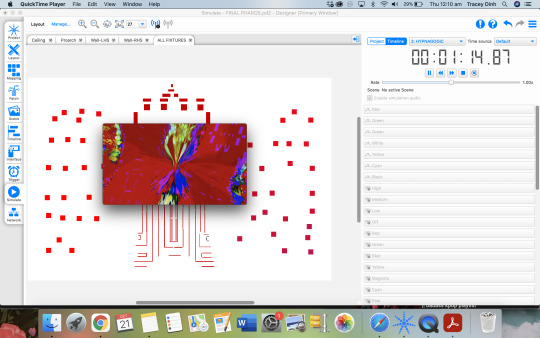
0 notes
Text
Week 10: Creative Practice
Feedback from 1-1:
From my feedback earlier today with Shaun regarding my visuals I was advised to try and lengthen my video to hit the 2 minute mark. With the rest of the week i definitely plan to be lengthening the negative valence portion of my work to let the audience bask in the feeling a little more and allow me to demonstrate more visual techniques then I have shown - with advice from Shaun to have less lulling moments and to amp up more visuals (with a regard for sound) where there are direct cuts to amplify the sporadicity of the negative valence part.
Stemming off of last week’s blog post, my work has been a continuation of said visuals as well as properly beginning to blend the first iteration of my work in piece together and continuously playing with the blending modes to not necessarily create a new work entirely for the negative valence portion of my work but rather expand on what I previously had both in the earlier iterations of the piece but also the positive valence of the work.
While at times I felt like this was creatively limiting and having to bring in smaller new elements from time to time, I do feel like for the sake of consistency in the project it worked soundly.
youtube
First lighting test at Capitol Theatre (testing effects)
youtube
0 notes
Text
Week 9: Creative Practice
Feedback from A3:
Based off of feedback from assignment 3, I was commended on my ability to put together the previous samples from my first WIP iteration into something more visually impactful. Shaun did advise me to however talk more to my collaborator in ramping up the sound design for the positive valence portion of my project as the sound was currently low impact.
My focus this week will be drawn to glueing the positive valence and negative valence states together in a transitional way and putting together the timeline of what is going to happen when regarding the final outcome/prototype.
I also discussed with Shaun the potential types of aesthetics I could look into in using for my work. This will be the focus of this week’s blog entry and also as I begin to try to figure out how I want to be approaching the visuals in an act narrative structure.
Three types of aesthetics:
Imitationalism: emphasis on literal qualities, focuses on realistic representation
Formalism: emphasis on design qualities
Emotionalism: emphasis on expressive qualities, requires that a work of art must elicit a mood, feeling or emotion upon the viewer experiencing it
Latest WIP iterations/Creative practice:
I wanted to mention was the use of the little infinite zoom sequence in the negative valence sequence (timestamp: 1:21 min) was intended to create a sense of continuity from the positive valence sequence but at a faster and more rigid pace compared.
youtube
With this slightly earlier iteration of the WIP above, there were actually minor issues I encountered in exporting the work hence why certain scenes accidentally repeat i.e. the lilac and gold positive valence sequence repeats itself after the Pharos only lighting sequence. But I think the idea of possibly repeating sequences but changing up the colouring and blending modes could make for a more disillusioning piece also [Bob Ross voice] “happy little accidents”. This idea of repeating sequences might also be able to help me navigate my way into creating an act narrative structure (?)
youtube
My main goal after presenting A3 was to get the entire sequence out with the audio being matched by Christine and that was achieved above. To speak on the sound design in this piece, the heavily echoed and reverbed “Wake up! Wake up!” creates space, a lack of intimacy therefore a more unfamiliar and uncomfortable mood. Progress-wise, I think as an entire work I can finally see the light at the end of the tunnel with more focus being on heightening the experience.
With regards to the three types of aesthetics, I think I have dipped my toes in playing with imitationalism and distorting that, from last week’s blog post this is done quick literally as I melt two images together in the positive valence portion to create a somewhat ethereal looking coherence of patterns and colours.
This is also seen around 1:24 and 1:32 in the first video where I melt the shape of an angel’s silhouette and a woman dancing in with the black screen/patterns.
However, I am considering looking into having more physical representations where we see the object before distortion (having it be recognisable) and then proceeding to distort it.
For the coming weeks in refining my visual, I want to be considering the following (with regards to the time at my disposal):
- If I want to shorten my visuals (without devaluing impact) and extend any lighting only sequences
- Reconsidering lighting sequences in playing with colour with regard for my visuals i.e. contrasting the colour palette I plan to use in the negative valence part of the visuals to create discomfort
- Continuing to play with blending modes and eye blinking to make a more successively flowing visual
1 note
·
View note
Text
Week 8: Reflection, Research and Analysis
Reflection:
From this week’s Tuesday class, it was made apparent that intimacy was a key point to consider in my project. From that I deduced that I may want to create a closer sense of space for the calm portion of my hypnagogic project and for the anxious/nightmare-ridden (?) portion if my project, creating a wider, more distant space that would be less intimate (to really drive the two contradicting states of my HME and heighten the experience)
From feedback from my initial visuals and I was advised to deepen thought into the sort of visuals I should be producing and make them feel less generated, visualiser-like and sort of generic. From this advice I want to try and sort of steer away from abstract visuals and reflect on past research I’ve done about what sort of imagery I could produce. From discussion in class, I have decided to explore the concept of opening doors quite literally and opening up new realities.
A concept I want to expand on when creating visuals is to toy with the concept of space and darkness the use of a black screen (and scaling of minimal elements in reference to Capitol Theatre without lights).
I was also advised by Shaun to consider checking out an theatre act structure for my project visuals, which will give snippets of hypnagogic experiences and allow me to create conjunct and disjunct moments between audiovisuals and the heighten both states I want to address of the hypnagogic experience itself. This will also help to drive this week’s creative (and possibly technical research) with references to Dante’s ‘Inferno’ and Goya’s ‘Disasters of War etchings’
Creative analysis:
Dante’s ‘Inferno’
What appealed to me about Dante’s ‘Inferno’ is the layers that it holds. Through the ‘9 Circles of Hell’, Dante creates otherworldly experiences, each ‘circle’ different from the last. If I were to describe the work, I would say nothing makes sense, it is in a way a fever dream and surreal. As described in a comment I stumbled upon:

I think this comment sums up the hypnagogic experience quite holistically and in looking back at what I had drawn reference from for assignment 2, I think the idea of highly detailed imagery combined with imagery that is hazy and lacking in detail would make for a more not only complex (like the hypnagogic experience itself) but also hopefully, heightened multi-sensory experience.
From Dante’s ‘Inferno’ and in the act narrative structure, I thought about creating snippets of different hypnagogic experiences from being led into a door/room. From that the following work in progress (if I can consider it one) has been made in accordance with an audio from Christine that would lead the positive valence (calm) portion of my work.
youtube
If anything I think I just wanted to potentially toy with the idea of an act structure in the above work. Initially when I was suggested the idea of an act structure, I thought about separating each act with the motion of the eye blinking (to really drive in the hypnagogic concept but that is something I want to be trialling this week and touching on in assignment 3) whilst visually spending a bit of time in each reality with moments being fleeting but impactful.
This got me thinking about the game, Superliminal which toys with the perception of space and time through synchronous acts of walking through rooms that look very similar to one another but ultimately, have one sort of confused in a complex and in a sense, hypnagogic manner.
youtube
With that being said, however, I have no intention of 3d modelling a series of rooms with the amount of time and technology at my distribution. But I still do think that transporting the viewer through rooms physically would make for an interesting experience. With that being said I think a drawback of this could that the experience may be disrupting which may not be wanted at points. However, I will keep this concept in mind as I continue my work-in-progresses.
Goya’s ‘Disaster of War’ etchings
Similarly Goya’s ‘Disaster of War’ etchings detailing the war between the French and Spaniards, from going through the works this print appealed to me in particular. The scale of the cat compared to the owl and the person at the foot of the stairs make me disillusioned and the distance between the cat and the owl making it look like the two animals are conjoined. That and paired with the textured lines which make up the backdrop mountains/hills everything becomes sort of a mashups of beings and gives into the hypnagogic concept with the image being so complex but parts of the image unrecognisable.

This got me interested in playing with ArtBreeder to create characters which I am then planning to take into After Effects like this tutorial does (whilst still keeping the kaleidoscopic effect without it having the visualiser, decorative and visualiser effect)
youtube
youtube
Using two of these intricate photos from Artbreeder:

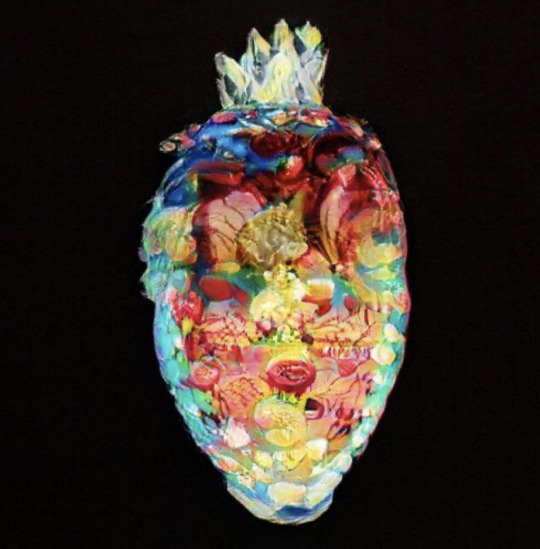
Using the first tutorial I put together the following:
youtube
With the second tutorial I came to make the following kaleidoscope:
https://youtu.be/aJdRtKkHis8
Although I think within the last week I did a lot of experimentation with video (with that helplessly falling through a creative stump, having too many broad ideas to too many narrow ideas...) This piece, I feel like is in line with what I presented for A2 with reference to Junghee Choi’s ‘Ahata Anahata’. This piece so far is responsive to feedback in that it is has less of the visualiser and generic appeal. However, in saying so I still do see potential for the piece in terms of length and maybe creating more of a whirlpool/3D dimension with the kaleidoscopic effect (of course while I am continuing to experiment and refine this piece, I will consider other images made and sourced off Artbreeder to heighten the hypnagogic experience also)
Latest iteration of the visual: https://youtu.be/i_TQkJ10N0U
0 notes
Text
Week 7: Reflections, Research and Analysis
Reflection:
After this week’s classes I was encouraged to consider the following elements for my own project after watching the following video:
youtube
- Colours in being able to generate space, i.e. warmer colours are more intimate, creating a more closed off space
(in this sense using warmer colours more dominantly through visuals and lighting design for the negative valence portion of the work?)
- Risk, safety factor and ability to pull it off
- Trepidation for the person --> creating confusion with umbrellas, balloons/balls, performers (element of surprise, overwhelming the senses in a visually stimulating way)
- Cinematically, negative emotions evoke from more close-up shots
- Extraceptive factors vs intraceptive factors
- Misalignment and uncertain related territory i.e wrong colour in the right place (could be something as subtle as a spatial shift in the sound - made all the more strange by a lack of a commensurate shift in the vision)
- Action and inaction (let the audience come up for air and then hit them again with the second video)
- Don’t give away colour palette in the first video/lighting
- Make transition part audio heavy?? element of surprise type beat !!
- Vague and/vs intense
- (in Capitol Theatre) - utilising space, light and dark
---
This week I want to potentially look into expanding my horizon regarding visuals and look into creating 3d models (i.e. Adobe Fuse, Mixamo rather than programs that would require hours of learning that I may not be able to afford for the duration of this project i.e. Blender or Unreal Engine)
This week I will also be looking into more physical representations of the hypnagogic form i.e. blurring of figures/forms via After Effects with effects like ‘Gaussian blur’ and ‘motion blur’ and playing around with mentioned concepts like kaleidoscopes.
Creative Research & Analysis:
After listening to my collaborator’s project proposal, regarding the serene portion of her work she mentioned listening to meditative music (i.e. https://youtu.be/Lju6h-C37hE) which became a grounding base for the sound design of the positive valence portion of my project.
youtube
What I found interesting about meditative music, in particular, was how it was able to sort of transcend the mind and arguably, the body into a different state. Aligning to what was said about the hypnagogic state and the idea of alternate realities I think the musicality of meditative and binaural beats has the potential to help aid that transitional state.
In regards to binaural beats in particular, in his dissertation, Kamran Cooper suggests that binaural beats have a visible effect on relaxation and states of consciousness. Binaural beats essentially contain frequencies which are separated into four distinct groups consisting of the following:
Each group also has a frequency range at which triggers the state of being (Cooper 2021)
Beta wave frequencies (12-30Hz): associated with activity and being busy, consciousness
Alpha wave frequencies (8-12Hz): associated with states of relaxed wakefulness.
Theta waves frequencies (3 - 8 Hz): correspond with drowsy, meditative responses, or light sleep.
Delta waves frequencies (0.2- 3 Hz): are associated with deep sleep
In regards to the hypnagogic state and the frequency waves about, to reiterate its definition as being the state between wakefulness and sleep, if binaural beats were used they should be skirting around the alpha and theta waves, particularly the latter.
I also found that this sort of meditative music was sort of celestial and got me to draw visual associations to it for example nebulas, in particular, struck me.
Nebula maker:
https://29a.ch/sandbox/2011/neonflames/


I actually came across this interactive piece on a tumble post a few years back regarding online interactive sites to relieve stress and alleviate anxiety, so right off the bat, I think that sort of meditative and calming value this piece holds is quite universal. Above are two of the nebulas I made this week. The first is more close-knit and prominent, the second more spread out and more formless. What I noticed about the second also is how it kind of reminds me of Junghee Choi’s ‘Manifest Unmanifest’ as well, retaining the abstract qualities of a hypnagogic vision. It would also be interesting to somehow make this piece more transient, maybe including an element of animation about it.
While I have brought up Steve Reich every now and then I thought I should take the time in this week’s entry to acknowledge and appreciate the musical minimalist’s sonic style and how I could build that into my own piece with the aid of my collaborator.
The gradual build of Reich’s work aids in heightening the multi-sensory experience sonically. As he describes, “listening to extremely gradual musical process...always extends farther than I can hear, and that makes it interesting to listen to that musical process again”. (Reich 1968). I also personally entangle this concept with the idea of deep-time and being able to sit in a work and experience it long enough without getting bored whilst listening to it almost repetitiously (since it is so gradual) as Steve Reich describes it.
Regarding sonic elements again from the tour to the black box and influence from Pierre and talk of Steve Reich and his use of adding elements gradually to build up momentum/clapping music to fill up space. Sonically I have discussed with my collaborator potentially using more stable and low-key binaural beats underneath the entire work sonically before it gradually unfolds heads into the negative valence.
References:
Cooper, K. “The Relaxing Effect of Binaural Beats”. ProQuest Dissertations Publishing, 2021, pp.10-11
Reich, S., 1968. Music as a gradual process. Writings on Music, 1965-2000, pp.34-36.
0 notes
Text
Week 6: Reflections, Research and Analysis
MANIPULATING SEMIOTICS:
Manipulating semiotics and dissolving concepts we know could essentially be an interesting way to approach a HME. From an example given in class, if we wanted to depict something was cold, the first and most obvious reaction would be to make it the colour ‘blue’. This was also brought up as feedback in response to my project proposal. I was advised by Shaun to look beyond what the colours mean i.e. using blue to represent the calm hypnagogic state, using red to represent the anxious hypnagogic state and how I could consider using other colour schemes in my work also i.e. using complementary colour schemes which I plan to do (and mention in week 5′s blog post). In summary I should be aware of the representation certain design elements and colours have and really play around with/manipulate it to make my HME as immersive and interesting as possible.
APPRAISAL OF EMOTION
The appraisal of emotion is situational. From an example given in class today this could mean as a real estate agent you if you have inspectors coming in the morning you should cook up a vanilla cake/food that will emanate that sort of sweet smell, as this is appealing to the inspectors and they are more likely to buy the house. Similarly, if you have inspectors coming later in the day/evening you should cook onion, food that emanates the homemade dinner environment.
Similarly, the playlist a shop plays can have a strong effect on the customers’ shopping experience, as opposed to a shop that disregards the sonic aspect and chooses to have the radio on - the customers’ shopping experience most likely will not be as heightened as the shop with a customised playlist. I found this fact particularly interesting because at my previous job we had an app which allowed customers to connect to and create their own playlist/add songs to the store speakers.
From this I should consider how I can emanate the appraisal of emotion situationally in my project. Perhaps this may be with regard and appreciation to the crystalline structure of Capitol Theatre itself.
VALENCE
The left hemisphere is dominant for processing positive emotions whereas the right hemisphere is dominant for processing negative emotions.
In that sense, to really heighten the multi-sensory experiences, it would be best to activate and trigger responses from both hemispheres of the brain. The left hemisphere (positive emotions) with the calm hypnagogic state and the right hemisphere (negative emotions) with the second hypnagogic state.
https://www.frontiersin.org/articles/10.3389/fpsyg.2013.00261/full
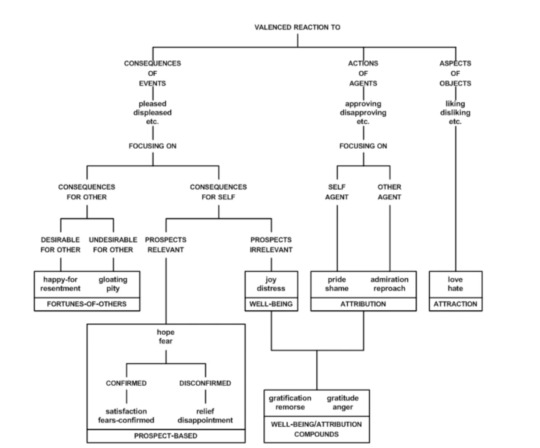
RICHARD DAVIDSON ‘THE EMOTIONAL LIFE OF YOUR BRAIN’
Relating back to the idea of breaking down semiotics, in Richard Davidson’s book, ‘The Emotional Life of Your Brain’, he speaks about semiotics in relation to meditation which I found super interesting.
“One goal of this form of meditation is to apprehend how your feelings and attitudes change...pain begins as pain. But as you focus on your bodily sensations...what you thought was pain is just a concept, and if you can peer beyond the concept, you perceive a cluster of sensations—perhaps tingling in your feet, pressure in your knees, a burning in your calf muscles.”
“Yes, my knees burn and my feet are tingling, but those are just discrete sensory experiences that I am not going to dignify or reify with the label ‘pain.’”
This made me consider how I could potentially reestablish key concepts in my work, to make it more interesting without deviating from the HME of ‘hypnagogic’ which I want to be achieving myself. I primarily thought to do this through the colouring changes with Capitol Theatre’s lighting system however, after reading excerpts of Davidson’s book, I feel more encouraged to bring this into my visuals and perhaps somehow through sound also.
Davidson’s book also brings about the concept of the Stroop Test “in which the word for a color is written in ink of a different color, such as blue printed in red, and the task is to read the word without being distracted by the ink color.” This idea would definitely break
--> red visuals mixed in in calm portion
i.e. instead of creating warmth with red, I could use the complementary colours blue and orange representative the colours on a flame
0 notes
Text
Week 5: Reflections, Research and Analysis
Reflections:
From feedback on my project proposal this week, what I took away was to (regarding the lighting portion of my work) really consider the use of colour with regards to the colour psychology technical research that was presented in my proposal and how I wanted this to affect the audience i.e. use of contrasting colours to annoy them and perhaps analogous colours to calm them and produce a more satisfying feeling.
I was also advised to be careful in fostering the transition between the two videos/on-screen visuals depicting the contrasting states. Where video one will affect video two but video two will not affect video one and to consider what I want the audience to take away/how they leave feeling seeing my work regarding the two contrasting states (i.e. do I want to lure the audience into three sorts of states? From calm (video 1) to anxious (video 2) and just overall maybe shock and annoyed for providing the contrast in said states?)
✧ This week I wanted to briefly touch in on the sort of content I want to be producing through inspiration from Hollis Frampton and Junghee Choi, two very respective figures whom I mentioned in my project proposal as I continue to draw more creative references (heavily from the readings of my proposals also).
Hypnagogic imagery: “kaleidoscope patterns that are changing, geometric patterns, shapes …light flashes…imagery involving animals, people and faces…scenes that are…highly detailed and colo(u)rful” (Waters, Flavie et al. 2016)
Ahata Anahata, Manifest Unmanifest XI (Junghee Choi 2017)
https://vimeo.com/245383233
vimeo
As for the imagery itself, fitting to the little description from Waters, a projection mapping work by Junghee Choi called Manifest, Unmanifest producing that sort of kaleidoscopic, highly-detailed and symmetric visual where there is no recognisable form or shape but rather the moving, transient patterns of light. Considering how I want to evaluate two contrasting stances of hypnagogia in my work, I think this piece is valuable in creating that more calm and ambient state visually.
Wall of Wonders: OCEAN (MELT 2014)
https://vimeo.com/105546780
vimeo
MELT’s cool colours make for a very collectively calm piece through its pastel hues of purples, blues and subtle nuances of pink and white. Regarding the intensity and use of said colours, initially I thought considering how muted the colours are and the constant use of these colours could make one lose interest in the work after some time, however I think the fast transition to white being used as the dominant colour in the ending portion of the work (refer to 2:07) could make for a very smooth transition into video of my work whilst maintaining a sort of consistency from the first video. However, I think the movement and domino effect of the individual shapes makes for a very compelling piece and reminds me of the sort of highly-detailed imagery also recognised in Choi’s above work. As for audio, the use of binaural beats in the work makes for a very relaxing piece. However, coupling the binaural beats with scattering noise that fades in and out indicating the movements of the shape, keyed up the experience with the work and had me paying more attention to the movements of the shapes (as compared to when the scattering sound was lacking). In summary the scattering sounds added more dimension to the binaural beats, without totally contrasting it and making it sound out of place and this is something I want to take into my piece (in talking with my collaborator of course).
Since I did mention in my piece that I wanted to record fragmented speech on top of the singing bowl/binaural beats itself - perhaps having the speech at different volumes and tones and mapping the visual to its wavelength could make for a more dimensional piece of work.
RICE (Junghee Choi 2009)
https://youtu.be/fp8u549UoPQ
youtube
For sound, this is in collaboration with Christine, so this is preliminary thinking I’ve discussed with her on my behalf but I focussed research around singing bowls which are used commonly for meditations. It works through brain entrainment propelling the brain into trance-like and relaxed states. Following the rabbit hole down Junghee Choi’s works, the live performance of RICE
Is produced through pre-recorded audio of the inscribing of a wooden rice paddle on the metal cooking pot and layer to mimic a sort of vibrational energy that would to one like a regular singing bowl.
This sort of performance/sound personally I found less pleasant to the ears but I think audibly transcending from a regular singing bowl to something like the one mimicked in Choi’s work could be interesting and aid the flow if I do decide to create one big work.
On top of that, I also want to be including vocalisations that I will record and echo myself, adding depth to the audio.
This sort of performance/sound personally I found less pleasant to the ears but I think audibly transcending from a regular singing bowl to something like the one mimicked in Choi’s work could be interesting and aid the flow if I do decide to create one big work.
On top of that, I also want to be including vocalisations that I will record and echo myself, adding depth to the audio.
A Visitation of Insomnia (Hollis Frampton 1970)

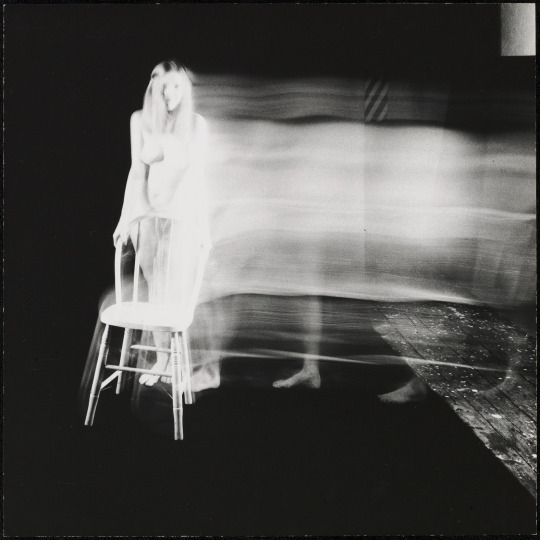
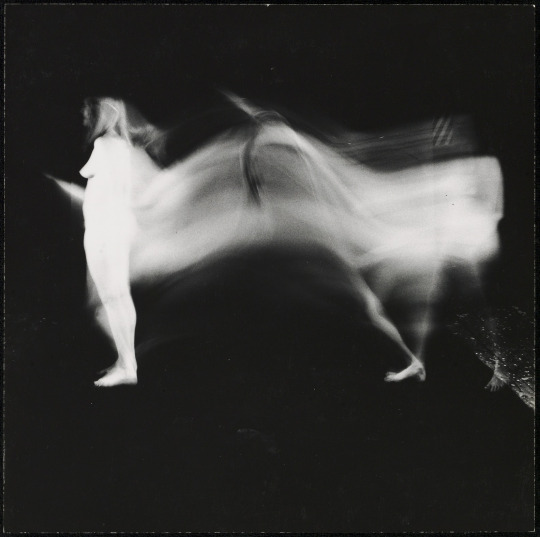
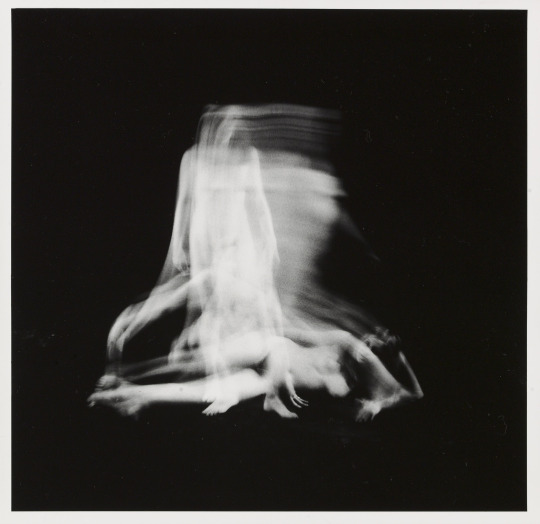
An interesting comment I received from a classmate upon presenting this piece was how this is relevant to the theme of hypnagogia/the hypnagogic state. Seeing a figure ephemerally but in lack of detail or even specific form and once we wake up from sleep only then do we realise and sort of try to piece it together, even then is hazy and produces imagery like the ones above at best in quality. Becchetti & Amadeo’s article suggests that in dreams we are able to remember and retain selective information depending on the relationship between neurochemicals and “situations that induce arousal, such as during exposure to threatening or exciting sounds or objects". From this notion, I should also be careful in deciding the hypnagogic imagery I choose to produce. From this, I also think having a more flowing and longer sequence would benefit the calm portion of my video and more disjointed, short sequences for the anxious part of my video. Overall, in my video experimentation process, I will aim to create pieces that are significant but also allow the audience enough time to process and experience the work but not enough for them to dwell on the work and begin to get bored.
This piece appealed to me in particular because again, as Waters et al. mentioned seeing people or silhouettes is a source of hypnagogic imagery and following suit with the idea of well in this case, semi-indistinguishable forms, in this case of a person like Choi’s work could make for a compelling project and his heavy use of light and dark I feel like creates a sort of eeriness which I can see using in the more anxiety-ridden part of my piece.
Colour psychology (on-screen visuals and lighting)
https://www.nickkolenda.com/color-psychology/#color-meanings-what
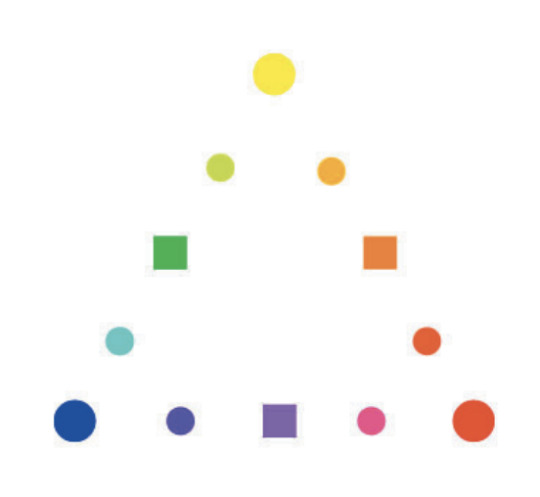
Monochromatic colour schemes: communicate unity and consistency therefore using colours of the same hue could help to elongate a time period perhaps****and a sense of calm for the lack of change (without it being boring)
Analogous colour schemes: use of adjacent hues on the colour wheel, strengthens design harmony which is satisfying to the viewer’s visual perception and could foster the state of calm in conjunction with video 1
Complementary and split-complementary colour schemes: using colours on opposing sides of the colour wheel using complementary colours strengthens contrast and produces a call-to-action effect which can be used to create a more heightened state of arousal and anxiety and contribute to video 2 of my project. Similarly, split-complementary colour schemes produce a similar effect although less harsh compared to a purely complementary colour scheme. A split-complementary colour scheme could therefore aid the transition from the two contrasting videos.
- triadic, tetradic colour schemes?
Lighting and visual attention:
Monochromatic colour schemes: using different intensities of light could create salience between the hues of i.e. blue (if the calmer state)
References:
Becchetti, A. & Amadeo, A. 2016, "Why we forget our dreams: Acetylcholine and norepinephrine in wakefulness and REM sleep", Behavioral and Brain Sciences, vol. 39, pp. 75.
Waters, Flavie et al. “What Is the Link Between Hallucinations, Dreams, and Hypnagogic-Hypnopompic Experiences?.” Schizophrenia bulletin vol. 42,5 (2016): 1098-109. doi:10.1093/schbul/sbw076
0 notes
Text
Week 4: Reflections, Research and Analysis
Reflections:
This week, whilst finalising my project proposal I was beginning to do research on refining the visual elements and also begin to think sonically about the sort of sound I would want to be directing my project and inspiration for my sound designer to produce. This assignment really helped me to resolve the idea of hypnagogic and what it meant to me/what I saw it as - backed up with research so that the hypnagogic concept is neither too generalised nor too personal (and unable to be perceived by the public as ‘hypnagogic’)
(While this week’s entry is a little shorter as focus has been poured into the creative proposal...) This week, in the blog, I continue to delve into more creative reference and inspirations for my piece as I have previously, with focus beginning to be drawn to sound also.
Research:
Upon researching, last week I was intrigued by a topic that was touched on in relation to hypnagogia and the hypnagogic state. That being synesthesia. While it should also be acknowledged that synesthesia is rather personal, I think that is very befitting of the hypnagogic state, because we are all different, we all experience sleep differently affecting the hypnagogic state we experience.
In Steen’s journal, ‘Two Kinds of Visions, Synesthesia and Hypnagogia: A Comparison’ she compares the difference between “synesthetic photisms and hypnagogic visions (Steen 2019). What I found particularly useful and interesting was certain keypoints i.e. the geometry of hypnagogic shapes in comparison to synesthetic ones that are more formless. From this journal, I also came to draw connections of the elaborative visual imagery that is found in hypnagogic visions to Junghee Choi’s ‘Manifest Unmanifest (Ahata Anahata)’ which will be spoken about in next week’s blog post.

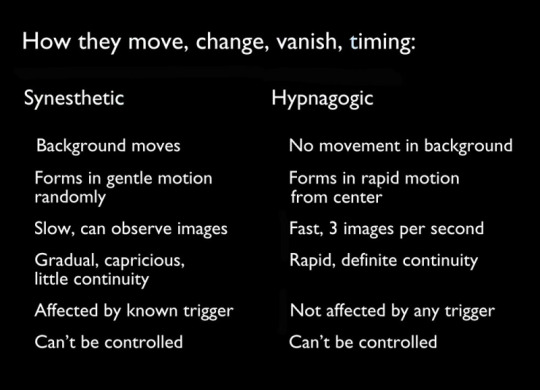
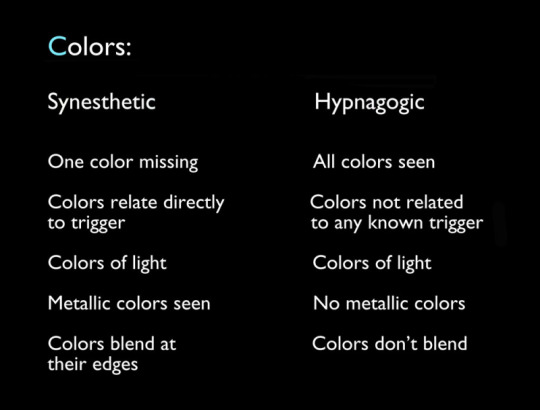
Bill Viola’s ‘The Dreamers’
youtube
In my multi-channel video class this week, we discussed Bill Viola’s works, ‘The Dreamers’ in particular appealed to me. Initially from the name of the artwork, I drew associations to this project immediately. What I found intriguing about this piece however, was the stillness of the models themselves but submerged in water, how much movement that creates with the water ripples although the models themselves are not creating too much movement. The water ripples also create a subtle distortion effect which I find interesting. I also found myself drawing associations from this piece to Béla Tarr’s ‘SÁTÁNTANGÓ’, mentioned in last week’s blog post. Both works I think have that sort of connection to deep-time leaving me feel like I could essentially watch it for hours on loop.
Adult Swim’s ‘Choir’
https://www.adultswim.com/etcetera/choir/
This interactive piece was actually shown to me by my younger brother. Created my David Li, the piece requires one to drag their mouse to the mouths of the spatial beings and open them. What I found interesting about this piece was not only for its visual elements but sonic also. If anything, the debatably angelic-like choral vocalisations encouraged me to use a sort of vocalisation in my work, particularly in the positive valence portion to really drive in the euphoric and almost outer-body experience the hypnagogic state provides. This work also experiences the sense of uncanny in my opinion, especially with the vocalisations as they’re not necessarily pleasing to listen to. In a sense, they also hit some sort of comedic and playful notes; and while I do not plan to be playful or uncanny with my work in light of Li’s piece (very fitting for Adult Swim) I thought I would acknowledge this side of the work also.
Onto the actual visual itself, as the mouths open to trigger the choir singing, a colourful whirlpool/water ripple/fluid movements also opens up in the backdrop of the work itself. What I found interesting about this was in conjunction with sound, the higher the pitch of the choir singing was, the warmer the colour of the backdrop became. Perhaps this has to do with a sense of synesthesia, however, I plan to develop my research on colour theory with the project proposal also.
youtube
References:
Steen, C. 2019, “Two Kinds of Visions, Synesthesia and Hypnagogia: A Comparison”, IRIS [Online], 39 | 2019, https://publications-prairial.fr/iris/index.php?id=916
0 notes
Text
WEEK 3: Reflection, Research and Analysis
Reflection:
Based of Thursday class’ site visit, I have really set my sight on working at Capitol Theatre (especially after experiencing previous students’ works - particularly Zac who also chose to address the word ‘hypnagogic’ for his project). I was surprised to see that there was a lot I could accomplish with lighting alone (as well as sound). I aim to download and familiarise myself Pharos of the course of this week also. takeaways from the site visit to Capitol Theatre was that with the controlled speed and colours of the lighting I would be able to create an optical illusion of the room shifting back and forth. From Zac’s work specifically, I really like his use of slow flashes on/off from the ceiling which could create the transitioning state between wakefulness and sleep. I also interpreted this motion as representing rapid eye movement (REM) which I will discuss later in the technical research (how hypnagogia works)
After this week’s presentation, I was also advised to check out the works, ‘Baa Baa Land’, Béla Tarr’s ‘SÁTÁNTANGÓ’ and Stan Brakhage’s works while will be the source of creative influence and research this week.
Also from the site visit, this time to the ‘Black Box’, I found Pierre’s works incredibly interesting, in regards to a sense of rhythm (randomised or not), sound and colour. Pierre also mentioned he took inspiration from composer Steve Reich regarding audio. From surface-level research I have also found Reich uses a lot of repetition in his pieces and I could definitely see that tying into the concept of deep-time. I also feel like a use of keyboard synth and the futuristic/alternate dimension it gives could be powerful. I would love to further investigate this in next week’s blog entry.
Technical Research: How hypnagogia actually works, envisioning hypnagogic colours:
Mavromatis’ dissertation (Mavromatis 1987) describes hypnagogia that as a state that involves (of the visual cortex) “loosening of ego boundaries...openness, sensitivity...of the physical and mental environment (empathy)” when one is transitioning to sleep and serving as an “intermediate phenomenon between REM dreams and hallucinations” known as NREM. During NREM sleep where hypnogogia tends to occur, “sensory information continues to be transferred and encoded in a similar way to the brain when awake at the level of primary cortices”. This “cortical responsivity” is what significantly contributes to hypnagogic phenomenas (Waters et. al 2016)
These phenomenas can be categorised as:
Visual: kaleidoscope patterns that are changing, “geometric patterns, shapes ...light flashes...imagery involving animals, people and faces...scenes that are...highly detailed and colo(u)rful” (Waters et. al 2016)
Sound: varying intensity from faint to loud noises i.e knocking, calling of one’s name, imagined (nonsensical and fragmented) speech (Mavromatis 1987)
Less common phenomenas recorded also include: gustatory (sense of taste) sensations, ofactory (sense of smell) sensations, thermal (perception of temperature) sensations (Mavromatis 1987)
The one most interesting to me however, was the associated phenomena of synesthesia which could be responsible for the perception and association of certain colours to imagery (and/or sound) that is commonly perceived in hypnagogic imagery. This synesthesia experience is also personalised and perhaps what makes each hypnagogic experience unique from one another.
‘Comingled Containers’ (Stan Brakhage 1997)
youtube
"..." REEL FIVE (Stan Brakhage 1998)
youtube
Both of the examples I’ve chosen from Stan Brakhage this week are starkly different in their use of material. The first work chosen, ‘Comingled containers’ is light and fluid. Projecting an image of translucent and spherical (organically shaped) beings that I was led to think of jellyfish in the ocean which could project that calm state of hypnagogia. In contrast, the second chosen work from Brakhage, "..." REEL FIVE is significant faster in frame transitions, over-exposed in colour with harsh, ragged lines that move about haphazardly. This, like the piece ‘HYPNAGOGIA’ by Pierre-Luc Vaillancourt mentioned as an example in this week’s presentation creates a heart-palpitating and tense state of affect in contrast to the calm experienced in ‘Comingled containers’.
I think with a careful consideration for material that I want to use in my video piece, the tempo of sequences and scenes in the video and accompanying audio could make for 2 stimulating and contrasting pieces that depict unique hypnagogic experiences, one from either end on the Circumplex Model of Affect.
━━━━━━━☆☆━━━━━━━
Technical Research: Deep Time
Deep-time: From the feedback I received from my presentation this week, I was encouraged to look into the concept of deep time and how it has the power to subconsciously make you lose track of time i.e. binging shows and contrarily how deep time can get ‘boring’ and maddening to a degree, making one painfully aware of how long a project has gone on for or how long they themselves have been situated in a certain time/space. I was further recommended to check out films ‘Baa Baa Land’ and ‘SÁTÁNTANGÓ’.
Creative research + analysis:
Baa Baa Land:
youtube
‘Baa Baa Land’ addresses that sort of calm and almost meditative state of hypnagogic experiences I touched on in last week’s presentation. The 8-hour slow-motion film has not only engendered a sort of love for sheep from me but the lack of changing shots (if I am correct the shortest shot was around 15 minutes while longer shots lasted for 1hr+ i.e the opening hour sequence) and unwavering camera movement really pulled me into the slow-motion film. These two concepts contribute to creating deep time and is definitely something I want to think about bringing into my project i.e. slow, unwavering changes in lighting of Capitol Theatre. The slow-motion nature of the film is also satisfying to watch and a stark contrast to modern-day cinema where with the digitalisation and mobility of media i.e. Netflix, plots seem to be shorter, less satisfying and lacking a sort of continuity.
SÁTÁNTANGÓ
youtube
In a similar fashion, Béla Tarr’s ‘SÁTÁNTANGÓ’ is a black-and-white film that is nearly 8 hours long also. Each shot in the film is approx. 2.5 minutes long (whilst in contemporary shot in a Hollywood film is approx 2.5 seconds). What I found interesting about this film was its repetition of scenes/recurring moments with small changes i.e. a character would leave earlier in a different perspective of a recurring scene than they did in another. Alongside that, the lateral camera work* expands the horizon of the set space and gives off an illusion of space. As seen in the clip above also, Estike is seen walking towards the camera whilst the camera gradually pans away from her also creating a nifty vertigo effect. This vertigo effect is something I want to consider in my final piece also and possibly having that vertigo effect play on loop could be a utilisation of deep time that is oddly both satisfying and unsatisfying at once.
*an interesting example of lateral camera work is also Stan Brakhage’s ‘The Wonder Ring’, especially the warping of the train and adjacent buildings through glass
youtube
References
Mavromatis A. On shared states of consciousness and objective imagery. J Mental Image. 1987;11:81–130
Waters, Flavie et al. “What Is the Link Between Hallucinations, Dreams, and Hypnagogic-Hypnopompic Experiences?.” Schizophrenia bulletin vol. 42,5 (2016): 1098-109. doi:10.1093/schbul/sbw076
0 notes
Text
WEEK 2: Reflections, Research and Critical Analysis (cont.)
Reflection (cont.)
Following this week’s class and narrowing down what sort of installation I wanted to create, currently I am taking a strong liking to the idea of projection mapping (if not possible with the venue, lighting works) (with sound and a video played on the screen in the middle of the theatre*) in Capitol Theatre. I also feel like the intricate patterns on the sides of the theatre and on the ceiling could add to my project in providing more depth (to just projection mapping)
*For now with the video I am thinking of an ‘Alice in Wonderland’ (1951) inspired sequence where we see a character initiate a sequence like Alice falling into the rabbit hole and have that lead to the rest of the work (projection mapping, sound) - however, I must also take into consideration here issues with syncing the video and projection mapping.

https://www.sensesofcinema.com/2017/screening-melbourne/melbournes-capitol-theatre/
As for the idea of projection mapping, stemming of the last blog entry’s technical research, I feel like creating what C.G Jung described as hypnagogic imagery that is then projection mapped around the building could definitely create a hypnagogic experience, using bright colours, shadows and patterns (also identified in the last entry).
The thought of the sides of the theatre reminding me of crystal shards also crossed my mind. My speculations proved true as found in Annette Condello’s article on the theatre, the “crystalline modern interior comprising abstracted prismatic stalactites”, when initially commissioned for, Herman Phillips “showed the architects a handful of colourful crystals obtained in Austria in the hope that the interior would resemble a crystal cave with a glazed ceiling” (Condello 2018)
‘Crystal gazing’ was also a technique implemented by C.G Jung to trigger his hypnagogic experiences so this knowledge may prove more useful than I thought and aim to possibly explore on the side next week.
Creative analysis:
[TW: Flash, strobing]
vimeo
Ref: https://vimeo.com/channels/1409335/267461156
To stimulate ideas I searched the word ‘hypnagogia’ up on Behance and through a series of clicking through works and related works, I found this film created by Pierre-Luc Vaillancourt with sound design by Jon Claude Bieschke. I found this piece particularly interesting for its quick flashes of colour (and lava imagery?) and strobing, the in-and-out nature speeding up representing the grey or ‘twilight’ area between wakefulness and sleep. Accompanied with the audio, I found this visual a heart-palpitating experience, which is personally something I have experience with hypnagogia myself. Of the examples mentioned in this entry, this film creates a less euphoric and perhaps sits in a tense and disturbed state on the Circumplex model of affect/emotion.
youtube
Through searching, I also encountered a drug-induced visualised game and UI/UX experience that is interactive from a first-person point of view. The use of surrealism is very apparently throughout the entire work. Initially we see brighter more vivid colour and are situated in an open space before the gamer is to navigate their way to darker and more enclosed spaces filled with shadows.

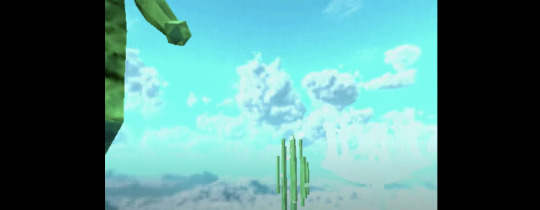
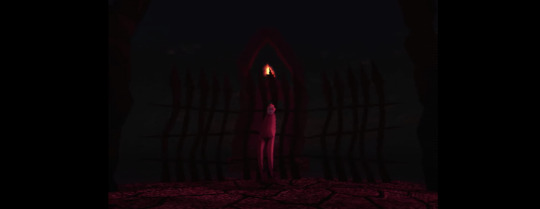
A sequence in the game dealing space and (initiating the motion of Alice in Wonderland falling down the rabbit-hole) occurs around the 1:00:34-1:00:57 timestamp. I find it interesting also how the creators behind the game have chosen to have the user sort of ‘float’ through this area, while an 8-bit clicking sound plays in the background alongside ominous noises. Overall I think creating a shift in affect from a more tranquil to restless state was interesting and kept the player on their toes.
Stemming off that idea of projection mapping I took to researching and analysing works that dealt with the idea:
Funnily enough, upon looking up ‘Capitol Theatre’ I came across an image (not from the one in Melbourne) but another Capitol Theatre that projection mapped what I sort of envisioned and spoken about in previous entries or found aspiring in other artists and designers’ works.

Ref: https://shorefire.com/roster/the-capitol-theatre
This projection mapping piece is vibrant in colour which is also typical of the colours used in hypnagogic imagery. The spherical nature of the shapes being projected also remind me a lot of Oscar Oiwa’s ‘Black and Light’, opening up more space in the theatre but at the same time seeming enclosed and intimate. I find it particularly interesting that with the projection mapped spheres, the theatre itself seems more dome-like, hence creating that intimacy. I also find it interesting how the artist has chosen to use a water-puddle like effect, this really got me thinking about texture and the sort of day-to-day imagery I’d be able to use and visually alter in my own piece. I also find it interesting that reflecting/mirroring the vortices to create a to create a larger being of organic shapes is nifty (and why I think it opens and creates the illusion of space visually). Overall, I think this piece plays with metaphysics and space (much like Oiwa’s work) and additionally, its fluid nature/texture makes for a more euphoric and calming piece.
When it comes to projection mapping and interactive projection mapping experiences, TeamLabs is well-known in the field.
The particular works that intrigued me were:
‘Drawing on the water surface’
youtube

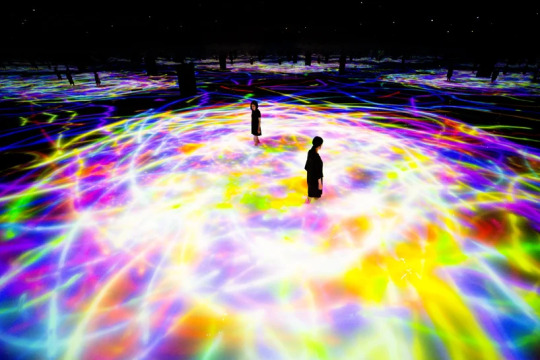
Ref: https://www.juxtapoz.com/news/installation/interactive-installations-by-teamlab/
Structured in a black box, the work utilises visually stimulating colours that align to being hypnagogic. The colours are not only bright and vibrant but are also accentuated through illumination, making it seem magical. What drew me to the work in particular, was the projecting mapping on a body of water. Like I mentioned with the previous example, the fluidity of water brings about a nature of calmness, heightening the euphoria in this experience. I feel like by physically having to step into a body of water in a black box also, it would feel slightly disorienting which is a concept explored in hypnagogic experiences (and discussed in the first week of class). Also not being able to see part of your legs can also simulate a sort of experience like you have partially and temporarily entered an alternative universe of sorts (and a very beautiful one at that in this case).
I also think using the black box against brightly illuminated colours creates an illusion of space, the mirrors in the space extending that illusion of space even further and creating a sense of telopsia.
References:
Condello, Annette. 2018. "Garish Luxury and the “Constructed Landscape”: Transcending the Colour of Opals in the Griffins’ Capitol Theatre" Arts 7, no. 4: 58. https://doi.org/10.3390/arts70400
0 notes
Text
WEEK 2: Technical Research
Below is some technical research I have done about the word ‘hypnagogic’ itself and how it ties into discussions, examples and creative research that I have previously spoken about.
This week I have also researched a closely related subject that sparked a lot of inspiration for me regarding this upcoming project and that is the ‘Alice in Wonderland’ syndrome.
References:
Swan, Wendy. 2008, “C.G. JUNG’S PSYCHOTHERAPEUTIC TECHNIQUE OF ACTIVE IMAGINATION IN HISTORICAL CONTEXT.” , Psychoanalysis and history vol. 10, no. 2, pp. 185–204.
In a journal discussing active imagination, conscious, subconscious and unconscious thoughts, the word ‘hypnagogia’ comes up and is defined as the ‘twilight’ zone between wakefulness/consciousness that “occurs twice daily just before one falls asleep and just as one awakens” (Swan 2008). In Swan’s analysis of C.G Jung’s psychotherapeutic techniques, she stated that Jung experienced hypnagogic visions himself and to deepen his understanding of the experience or “unconscious fantasy material”, explored “hypnagogic imagery, automatic writing and crystal-gazing” (Swan 2008).
Upon looking up the topics individually I found that hypnagogic imagery helped to induce lucid dreaming where the dreamer has to be aware of the transition between wakefulness and sleep --> ‘Wake Initiated Lucid Dreaming’ technique
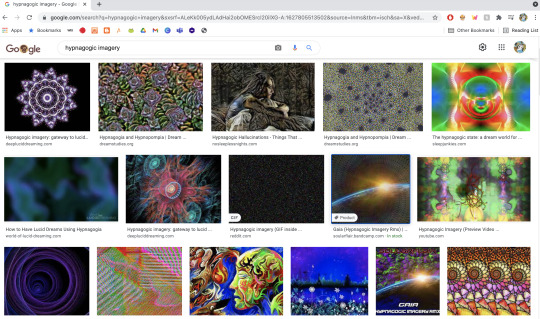
As a preliminary Google Images search, a lot of these images use bright greens, reds and pinks, purplish blues with black and white shadows. Patterns involved in hypnagogic imagery included a lot of symmetry i.e. mandalas and repeating patterns or hypnotic spirals (which associate themselves to the motion of falling). These elements I think are important to consider if I consider projection mapping (Capitol Theatre) for the final outcome.
Tunç, S. & Başbuğ, H.S. 2017, "Alice in Wonderland syndrome: a strange visual perceptual disturbance", Klinik Psikofarmakoloji Bulteni, vol. 27, no. 4, pp. 412-415.
Alice in Wonderland Syndrome (AIWS) is categorised by “recurrent visual hallucinations of bizarre perceptual distortions in size, shape, colour, or motion of the objects” (Tunç & Başbuğ 2017)
The article also makes apparent the following key terms:
Micropsia: seeing the objects smaller than they actually are
Macropsia: seeing the objects larger than they actually are
*Telopsia: seeing objects further away than they actually are
*Pelopsia: seeing objects closer than they actually are
These concepts are apparent in into previous creative research particularly Oscar Oiwa’s ‘Black and Light which toys with the perception of telopsia and pelopsia and overall visual perception (or deception rather...) of space.
The article also mentioned a case study where a young female experienced
seeing”her cat as a big tiger” (Tunç & Başbuğ 2017), her mother growing bigger and taller than normal and appearing to me 20 m away when she was sitting right next to her and perceiving her father’s head as being blue and bigger in size (macropsia). This reminded me of the surrealist work by the famous René Magritte, ‘The Son of Man’ where an apple partially hid his face. This also got me thinking about how affiliated hypnagogia, the AIWS and surrealism could all be intertwined in a visually immersive piece to really heighten viewers’ senses.
1 note
·
View note
Text
WEEK 2: Reflections, Research and Critical Analysis
Key terms from this week’s class:
Metaphysics: the principles of things, abstract concepts, existence beyond reality
Dada: satirical and nonsensical reaction against the state of capitalism
Surrealism: juxtaposition of the non sequitur (a conclusion or statement made that isn’t aligned with previous evidence or comments) and unconscious mind (very much hypnogogic)
─── ・ 。゚☆: *.☽ .* :☆゚. ───
Following on from last week’s research and analysis, this week I wanted to take a deeper dive into the Alice in Wonderland concept, in particular how that is relevant to:
- the concept of falling explored last week
- the Dada movement
- surrealism (in particular the theme of escapism in (surrealist) art)
- the ‘Alice in Wonderland syndrome’ and its relation to metaphysics
Reflection
Personally moving forward in this project, I was drawn to a sort of Alice in Wonderland concept namely because of the ‘falling down the rabbit hole’ sequence. I feel like this has potential to address the hypnogogic state and the grey area between wakefulness and sleep. From when Alice falls down the rabbit hole, things are quick to become distorted and nonsensical (very much Dada and surrealist concepts become apparent here), opening a sort of alternate universe (which was also an idea brought up by a member of the Teams group call last week).
To really heighten the experience I feel like I should characterise everything from a first-person point of view, to make the viewer/person experiencing the project feel as if they are Alice going through that hypnogogic state themselves.
As i further progress with this project, I also feel like ‘whimsical’ could also be a potential keyword I would like to address in conjunction with ‘hypnogogic’.
Creative research + critical analysis
https://visionaireworld.com/blogs/experience/visionaire-presents-black-and-light-by-oscar-oiwa
vimeo
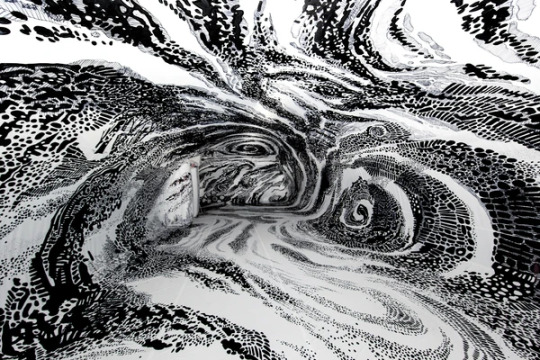
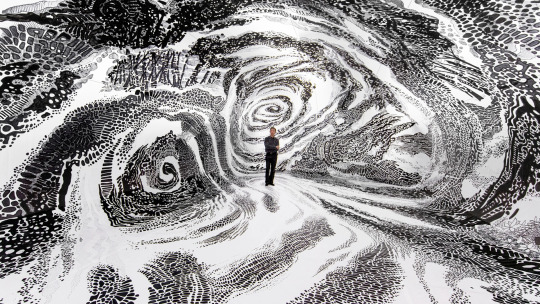
“Oiwa visualized the crash of two different things. Two opposite ideas or situations. Like light and shadow. Or hot and cold. Or in politics, left and right. This collision of opposites forces movement forward.”
Oscar Oiwa’s ‘Black and Light’ work simulates the equirectangular video effect without creating any moving motions but is rather made illusionary through the black and white spherical organic figures. The clever use of black and white not only stands out but also gives the piece a unique cartoon/manga-like appearance. By choosing to use black and white shadows only, Oiwa also creates depth, dimension and space - contorting metaphysics, enhanced through the presentation of the work in a dome which is perhaps a more enclosed and intimate setting (creates a feeling as if you are likely to be sucked in by one of the spherical beings) as compared to say, a museum.
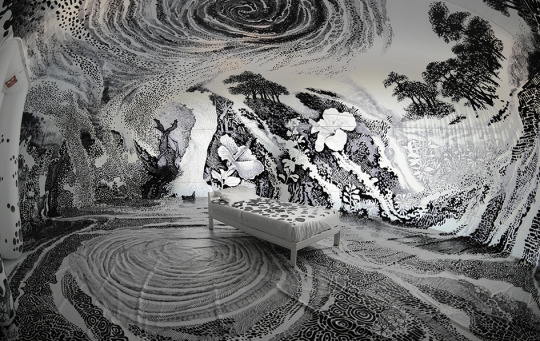
Similarly, taking on a more obvious dream-like setting, centring a bed in the middle of his work, Oiwa incorporates flora and nature in this piece, ‘Dreams of a Sleeping World’. Again, through the art piece being presented in a dome, the spherical beings in Oiwa’s art begin to toy with space and the metaphysics, in this case, in a dream state (perhaps hypnogogic?). This piece is more tranquil than the last (hypnagogia can also be associated with a euphoric - as described in a group discussion since the experience is very much personal) due to the mix of flora and the physical being of the bed placed in the exhibition also.
0 notes
Text
WEEK 1: Research and Critical Analysis
A key concept discussed in the keyword group was the state of feeling like you were falling. Therefore throughout the week I explored through examples that targeted the concept of falling and moving through spaces whilst feeling somewhat hypnogogic.
The state of falling is able to equate to notions such as losing control and disorientation (as mentioned in the previous blog post)
Regarding the method of executing this process, I thought of using ‘Tiny Planet’ and ‘Equirectangular immersive video’ to create such disorientation and ‘trippy’ state
youtube
(Regarding the clip ~0.25 second mark) This video technique works in that it creates the illusion of time and space, whilst watching this I felt as if I was moving further from but also closer to the space/spinning quickly but also slowly at the same time. Therefore I think, visually this could be a stimulating process to include in my practice.
Another example I found visually stimulating is the website: http://zoomquilt2.com/
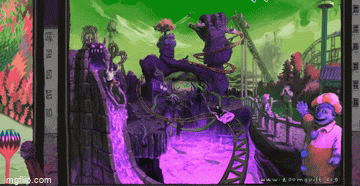
The website is an endless loop of scenery that is equated with what could be seen in a hypnogogic state/getting high. The colours in the scenes also change with time, further creating that feeling of disillusionment. I also thought the use of duller colours in conjunction with vibrant almost eye-hurting colours made it harder for me to draw my eyes away from the work. The zoomquilt experience also follows a similar motion to that of the equirectangular immersive video in that it toys with space, the motion of zooming in also suggests the idea of falling through different spaces with different vibes whilst being very hypnotic (a rabbit-hole like effect)
youtube
Mentioning the rabbit-hole effect, I was surprised to see how many trippy ‘Alice in Wonderland’ edits there were floating around on the internet. While this strays away from the concept of falling/moving through time, the effect created on Alice and her surroundings creates a bit of a time ‘lag’ which toys with the idea of time without any rotational or zooming in/out effects. Again, like the zoomquilt experience, this Alice in Wonderland edit also utilises a lot of vibrant colours against black and white shades more-so. The edit also experiments with the concept of space through using warping effects (~3.30 mark in video)
youtube
The previous examples of falling I’ve included are namely experienced from a first-person point of view (arguably this could be more immersive for the viewer...) however I also thought to include the famous FKA Twigs as an example in my weekly blog. The music video ‘Cellophane’ is very ethereal in its being, utilising more tranquil colours. The falling sequence (~2.40 mark onwards in the music video) physically depicts the singer falling but also morphing with/from metallic particles. The metallic particles contrast the softness and tranquility of the song and video, which could equate to the loss of control experienced in the hypnogogic state. Additionally, it should also be noted that singer falls at a much faster speed that the previous examples that have expressed a similar concept, which really drives through the concept of losing control (in the hypnogogic state).
0 notes
Text
WEEK 1: Reflection
KEY TAKEAWAYS THIS WEEK (REFLECTION)
- Consider denying certain senses to lead to a more heightened multi-sensory experience i.e. closing your eyes during a rollercoaster ride (losing the expectation of what is to come next on the ride)
- Research the amygdala in relation to exteroceptive and interoceptive stimuli
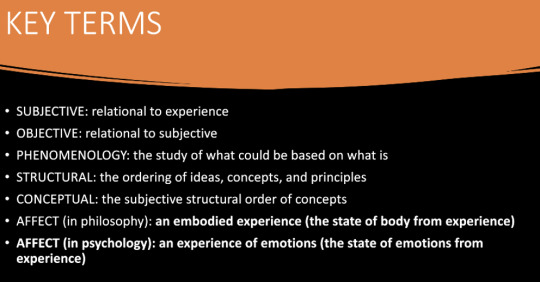
- Heightened experiential visuals: Visual practice that induces a reaction beyond the frame composed of five foundations (light, movement, colour, time, disruption)
Circumplex model of affect/emotion:

CHOSEN KEYWORD: HYPNOGOGIC*
*For the time being I have chosen to research the word ‘hypnogogic’ however with more research and information learnt through the course I have also considered representing words like ‘entrancing’ or ‘hypnotic’ in conjunction with the word ‘hypnogogic’
Hypnagogia is the transitional state of consciousness between wakefulness and sleep.
In the class discussion such themes and concepts were discussed:
- external stimulus becomes intangible
- lucid spaces
- access to another realm/alternate universe
- lucid dreaming
- personal and unique experience
- dreams and nightmares
- warping of reality
- seeing imaginative figures and creatures
- feelings associated: numbness, loss of control, falling, bliss, euphoric, disorientation
(to possibly relate to the visual foundation of disruption for final piece)
Hypnogogic jerk: a brief and sudden involuntary contraction of the muscles of the body which occurs when a person is beginning to fall asleep, often causing the person to jump and awaken suddenly for a moment.
Synchronisation/desynchronisation of stimuli: the sense shifting form and taking form of something else to create disorientation i.e. the sound of someone screaming but comes out a soft whisper (juxtaposition)
(in relation to the visual foundation of time) consider how quickly you move through the hypnogogic space
Other states (i.e. overwhelming, brutal, serene etc.) are more feelings whereas this state (hypnogogia) is more one that you enter
(consider how being in the state makes you feel rather than the state itself)
2 notes
·
View notes